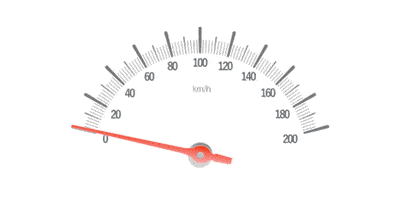Step 1: How Much Car Can You Afford?
If you’re sticking to a tight budget, you may want to spend even less. Used cars will need a little extra attention from time to time: new tires, maintenance and the like. And then there are the other ownership costs shoppers sometimes forget to account for, such as fuel and insurance.
If the car you’re planning to buy is out of warranty, it might be a good idea to set aside a “just-in-case” fund to cover any unexpected repairs.
Step 2: Build a Target List of Used Cars
It’s no secret that the Honda Accord and Toyota Camry make for good used cars. But they might cost a few thousand more than a comparable Ford Fusion or Kia Optima, even though these are good cars, too. So, if you’re looking to save money, consider more than one brand. We suggest making a list of three cars that meet your needs and fall within your budget. Check www.autocarnashville.us we have great inventory to match your choices.
Step 3: Check Prices
Prices are driven in part by where you’re shopping. Used-car retailers such as Auto Car Inc and online websites where private-party sellers list their cars. Of the four, private-party cars will usually have the lowest selling price but almost impossible to find after the deal is done. CPO cars will usually cost the most, but for the reasons we’ve noted.
Step 4: Check the Vehicle History Report
Unless you’re buying the car from a close friend or family member who can vouch for its history, plan to get a vehicle history report. This is an essential early step. If the car you’re looking at has a bad history report, the sooner you know the better.
AutoCheck is the best-known sources for vehicle history reports, which can reveal vital information about the car, including whether the odometer has been rolled back or if it has a salvage title, which means it has been declared a total loss by the insurance company. You’ll use the car’s vehicle identification number (VIN) to get this information, and in some cases, all you need is the license plate number.
Step 5: Contact the Seller
Once you find a good prospective car on our inventory, don’t run out to see it. Call our seller first. This is a good way to establish a relationship with the seller and verify the information about the car.
Sometimes the seller will mention something that wasn’t in the ad that might change your decision to buy the car. Although many people are tempted to negotiate even before they have laid eyes on the car, it’s better to wait. Once you see the car, you can tie your offer to its condition.
If things are going well, set up an appointment to test-drive the car. If possible, make it for daylight hours. That makes it easier to see the car’s condition.
Step 6: Test-Drive the Car
Test-driving a used car is the best way to know if this is the right car make and model for you. It’s also a good way to assess this particular car’s condition. So, tune out distractions and focus on the car. Here are some things to check:
- Is it easy to get in and out of the car without stooping or banging your head?
- Is there enough headroom, hip room and legroom? Remember to see how these feels in the backseat, too.
- Is the driving position comfortable? Do you sit too low, too high or just right in the car? Can you tilt or telescope the steering wheel for a better fit?
- Are the seats comfortable? Are they easily adjustable? Is there a lumbar support adjustment for the driver? How about the front-seat passenger?
- Do you see a lit “check engine” light? If so, get that problem checked out before buying.
- How is the visibility? Check the rearview mirror and the side mirrors. Look for potential blind spots.
- Use your nose. Do you smell gas, burning oil, or anything amiss?
- How are the brakes? Are they doing the job of stopping the car? Do they squeak?
- Pop the hood. You don’t have to know a lot about cars to see if something looks wrong. If something is leaking, steaming or covered in oil, it’s time to ask questions.
- Does the air-conditioning blow cold? Do headlights, brake lights and turn indicators work? Test them to be sure.
After the test drive, ask the owner or dealer if you can see the service records. These will show you if the car has had the scheduled maintenance performed on time.
Step 7: Negotiate a Good Deal
Does the idea of “talking numbers” fill you with dread? It shouldn’t. Negotiating doesn’t have to be a drawn-out, traumatic experience. If you are reasonable and have a plan, chances are you can make a deal quickly and easily:
- Decide ahead of time how much you’re willing to spend to get the car. But don’t start with this number in your discussion.
- Make an opening offer that is lower than your maximum price, but in the ballpark based on your average price paid research in Step 3. Explain that you’ve done research on Edmunds or wherever else, so you have facts to support your offer.
- If you and the seller arrive at a price that sounds good to you and is near the average price paid, you’re probably in good shape.
- And remember, the people on the other side probably hate negotiating too (even if it’s their job).
Step 8: Get the Paperwork Done
If you are buying a car from an individual owner, make sure the seller properly transfers the title and registration to you. It’s important to close the deal correctly to avoid after-sale hassles. Before money changes hands, ask for the title (which is sometimes called the pink slip) and have the seller sign it over to you. Rules governing vehicle registration and licensing vary from state to state. If possible, check with your local department of motor vehicles to make sure there are no past-due registration fees you’d be responsible for should you buy the car. Whether you buy from a dealer or a private party, make sure you have insurance for the car before you drive it away.
Once you’ve done the paperwork, it’s time to celebrate your new purchase – maybe with a drive-through dinner. You deserve it!


